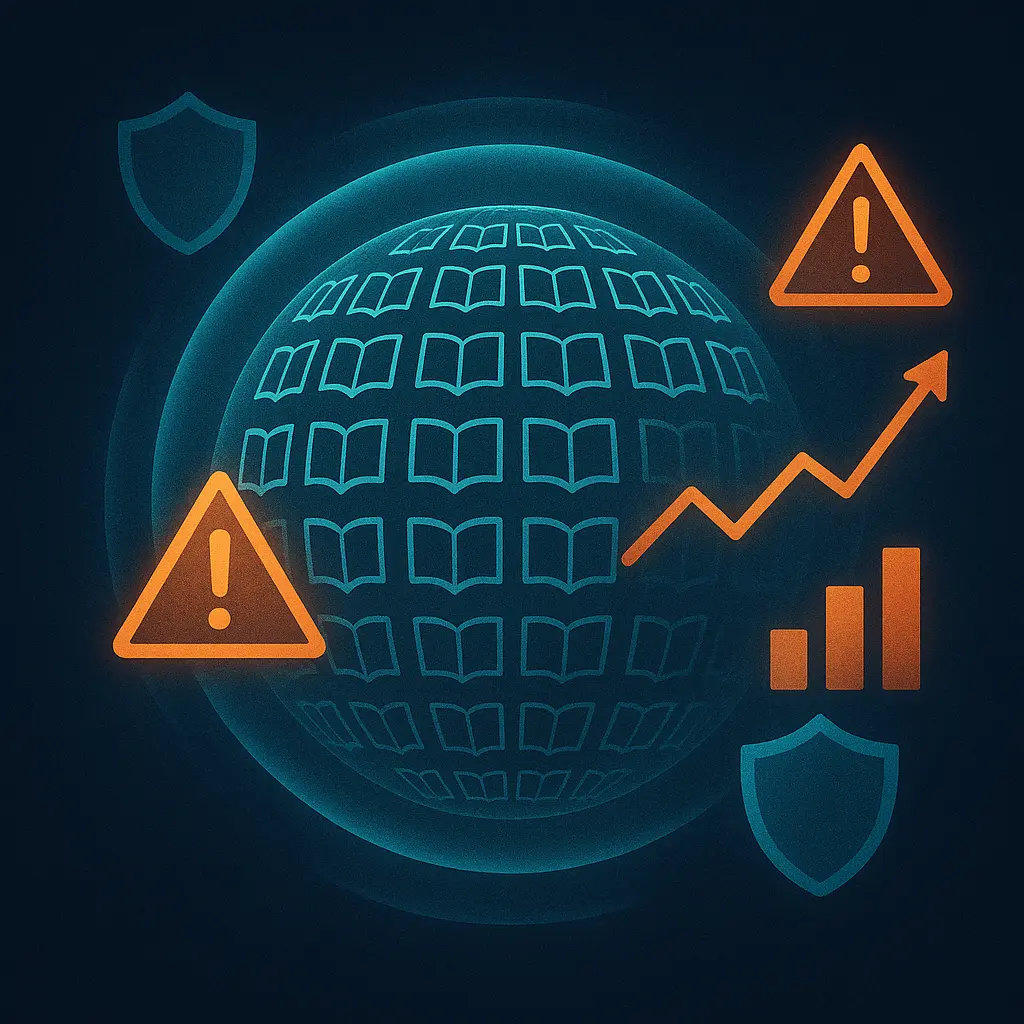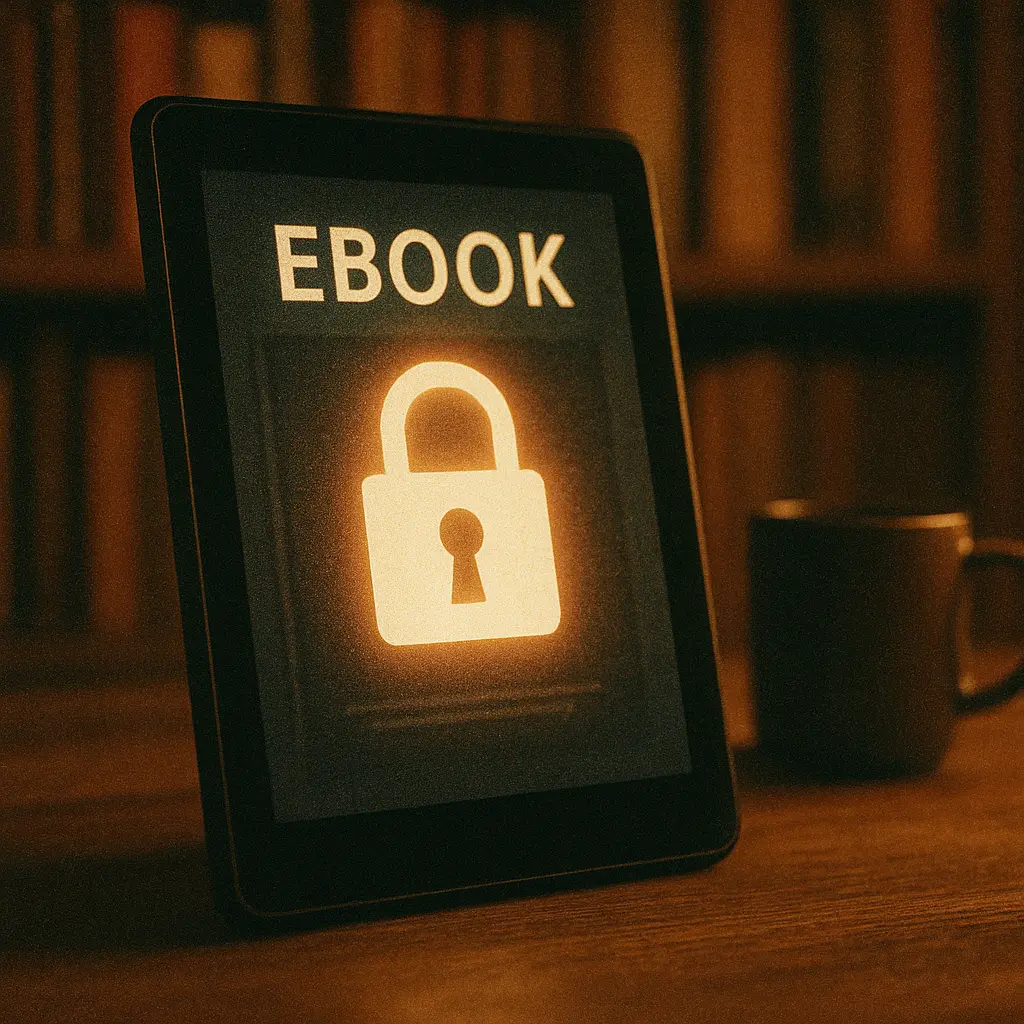Digital Rights Management (DRM) acts like a virtual lock on your eBooks, ensuring only authorized readers can access and use your content.
Introduction: The Ongoing DRM Debate
Digital Rights Management (DRM) for eBooks has sparked debate for years. Critics often claim that using DRM means you don’t trust your readers or that it unfairly limits people who legally purchased your eBook. In reality, modern DRM aims to be nearly invisible to paying customers while safeguarding authors’ rights. Far from being a punishment to loyal readers, DRM is a necessary protective measure--especially in 2025’s digital publishing landscape.
Indie authors, small publishers, and educational institutions are discovering that DRM matters now more than ever for protecting intellectual property and sustaining revenue. This article explores what eBook DRM really does, why it’s increasingly critical in 2025, and how it benefits independent content creators and educators without undermining the reader experience.
What is eBook DRM and What Does It Do?

Digital Rights Management refers to technologies that control how digital content is accessed, copied, or shared. In the context of eBooks, DRM places a virtual lock on your file. Legitimate buyers can open and read the book (often on multiple devices), but unauthorized copying or distribution is restricted. Key capabilities of eBook DRM include:
- Preventing Unauthorized Copying: DRM embeds encryption and other protections to block illicit copying or file sharing of your eBook. This deters casual piracy and “freebie” sharing that can erode your sales.
- Controlling Access: Only users with the proper license (usually by purchasing the eBook) can open it. Platforms like Kindle ensure an eBook file will open only for the buyer’s account or approved devices. This keeps your book from being read by those who haven’t paid for it.
- Restricting Unconsented Reselling: DRM prevents malicious actors from taking your eBook file and selling it or uploading it elsewhere without permission. You retain control over distribution, so your work isn’t exploited on unauthorized websites.
- Enforcing Licensing Terms: Authors and publishers can set rules like how many devices can load the eBook, whether it can be printed or copied, or if it expires after a certain rental period. For example, a university library might lend a DRM-protected e-textbook that “returns” itself after 30 days.
- Giving Creators Control & Insights: DRM helps authors retain control over where and how their eBook is available. Some DRM systems even allow tracking usage data and gathering insights, ensuring accurate royalty payments and reporting for indie authors. It also enables new business models like subscription access or rentals that wouldn’t be feasible without protection.
In short, DRM safeguards your eBook. It doesn’t stop honest customers from reading on their preferred devices, good DRM should be almost unnoticeable in legitimate use. But it does make it far more difficult for your book to be copied or spread across the internet without your consent.
Why DRM Matters More Than Ever in 2025

The digital publishing world in 2025 presents unprecedented opportunities for authors, but also new challenges that make DRM critical. Online piracy of written content has surged even as music and video piracy have declined. Global visits to pirate sites for publishing content reached 66.4 billion in 2024, a 4.3% year-on-year increase . Publishing now accounts for roughly 30% of all piracy website traffic. This boom in book-related piracy is driven in part by the explosion of self-published eBooks and even the rise of AI-driven text scraping bots that crawl the web for text.
At the same time, the legitimate eBook market continues to expand. Projections show the eBook sector adding about $14.5 billion in revenue from 2025 to 2029, around 10.7% compounded annual growth. With digital book sales growing steadily, authors and publishers have a lot to gain—but also more to lose if piracy cuts into those gains. Every unauthorized download is a potential lost sale or breach of your intellectual property rights.
DRM is more important than ever as a line of defense. As your audience grows globally, your revenue and rights must be protected. Simply put, protecting your income, your author brand, and your creative rights in 2025 demands an up-to-date DRM strategy. Skipping DRM in today’s environment is akin to leaving the front door to your house wide open.
Benefits of DRM for Indie Authors and Small Publishers

For independent authors and small presses, the stakes of piracy are high. You may not have a legal team or massive budget to counteract pirated copies floating around, so preventing piracy proactively is key.
- Protecting Your Livelihood: You pour time, effort, and money into your book. DRM helps protect that investment by deterring casual theft. Many self-published authors see DRM as a necessary measure to protect their livelihoods, preventing casual readers from copying and uploading their work to pirate sites . This means your royalty income is less likely to be undercut by unauthorized freebies circulating online.
- Retaining Control Over Distribution: DRM ensures you stay in control of where your eBook goes. If you enroll in an exclusive program like Kindle, DRM can help enforce that exclusivity by making it hard for anyone to export and share your book elsewhere.
- Preventing Unauthorized File Sharing: Even well-meaning fans might be tempted to share your book PDF with a friend or two. DRM puts gentle roadblocks against this (such as tying the file to their device or account), thereby preventing “friendly” sharing from turning into a viral free-for-all.
- Preserving Your Brand and Reader Confidence: When your eBook is only obtained through legal channels, readers know they’re supporting you and getting an authentic copy. This preserves your brand’s reputation.
- Enabling Direct Sales and New Models: With a robust DRM solution, you can sell eBooks directly on your website or through alternative storefronts. DRM gives you the confidence to distribute on your own terms.
No anti-piracy measure is 100% hack-proof, determined hackers can crack most systems given enough time. However, DRM stops the vast majority of casual pirates and makes a life-changing difference to your income.
Benefits of DRM for Educational Institutions
It’s not just commercial authors who need DRM. Schools, universities, and educational publishers also rely on DRM to protect their digital content.
- Preventing Unauthorized Sharing of Course Materials: Instructors and institutions invest heavily in developing e-textbooks, lecture notes, and online course modules. DRM ensures only enrolled students or authorized faculty can access those materials .
- Securing Revenue Streams from Digital Programs: Many universities offer paid online courses or sell digital textbooks. DRM helps secure these tuition-based assets by preventing them from leaking out for free.
- Ensuring Compliance with Copyright and Licensing: DRM provides a framework to enforce usage limits required by licenses, such as limiting printing, preventing copy-pasting, or ensuring an eBook can only be accessed by one student at a time.
- Protecting Intellectual Property and Research: Universities produce original research and proprietary content. DRM can shield unpublished papers, research data, or internal documents from being leaked or accessed by unauthorized parties.
- Maintaining Academic Integrity: By controlling access to materials, DRM indirectly supports academic honesty, ensuring students can’t access resources they shouldn’t.
In summary, DRM gives educational institutions peace of mind that their digital resources are used appropriately and remain compliant with regulations.
Modern DRM Trends: More Flexibility and Security
DRM in 2025 isn’t the clunky, ultra-restrictive system you might remember. New approaches are making DRM both more robust against piracy and more flexible for legitimate users. Here are some trends:
- Social DRM & Watermarking: Encryption-based “hard DRM” is often paired with social DRM (watermarking) for extra protection. For example, platforms like EditionGuard can imprint the buyer’s name and order ID on every page as a deterrent. This “soft DRM” doesn’t stop access or copying outright, but it holds people accountable and is well-received as it doesn’t hinder honest use .
- Broader Device Compatibility & User-Friendly DRM: The industry is responding with more reader-friendly DRM solutions. Many systems now allow use across multiple devices and are adopting standards like Readium LCP which work in various reading apps.
- Integration with Emerging Tech: AI-driven DRM could monitor for suspicious usage patterns and automatically flag or lock abuse. Blockchain-based DRM, where each eBook license is recorded on a blockchain ledger, is also being explored. DRM is evolving with technology, aiming to become more secure yet less intrusive.
A modern concern is large language models (AI) scraping content from anywhere they can crawl. DRM can help by keeping eBook files behind an encrypted server link, making it difficult for bots to access your work .
Implementing DRM Without the Hassle (Solutions for Small Players)
Indie authors and small publishers often avoided DRM due to complexity or cost. Today, there are accessible DRM services tailored for smaller-scale content creators as well as for educational institutions and businesses.
For example, EditionGuard offers enterprise-grade eBook DRM as an affordable web service. It uses industry-standard Adobe DRM encryption to protect eBooks from unauthorized sharing, but it’s packaged for easy use. EditionGuard integrates with e-commerce and CMS tools like Shopify and WooCommerce, so you can sell protected eBooks directly on your website. The pricing is scalable, making it cost-effective for independent publishers and small businesses. Many of these platforms offer free trials, making it easy to test DRM with your workflow.
Crucially, solutions like this support multiple DRM types and use-cases. EditionGuard supports Adobe DRM, Readium LCP, and social DRM options like watermarks. Educational institutions are also using these services to encrypt and distribute textbooks to students seamlessly.
In short, implementing DRM in 2025 is not only doable for small entities—it’s actually pretty easy. If you can upload a file and use a plugin, you can have professional DRM on your eBook store or website.
Bottomline: Protecting Your Digital Rights is Protecting Your Future
Going DRM-free is a philosophical choice that some creators make, but it comes with risks. For those who want to ensure their creative works are not freely passed around or exploited, Digital Rights Management provides a crucial shield. It’s about striking a balance: giving paying readers the access they deserve, while using technology to prevent theft and misuse.
As an indie author, small publisher, or educational content provider in 2025, you face a landscape of boundless digital opportunity. Embracing DRM ensures those opportunities aren’t undermined by unauthorized distribution. By keeping control of your eBook’s distribution, you also protect your revenues, your ability to reinvest in future projects, and the integrity of your content.
DRM isn’t about mistrusting every reader; it’s about trusting your business sense. You have the right to earn from your creations and to set the terms of their use. Millions of small creators now use DRM for precisely these reasons. With piracy of written works on the rise, this protective step is more justified than ever.
In conclusion: Digital Rights Management still matters in 2025 because it empowers creators and educators to thrive in the digital realm. By adopting a sensible DRM strategy, you ensure that your eBooks remain in your control and benefit only your legitimate readers. Your creative future is worth safeguarding, and DRM is one of the best ways to do it.



